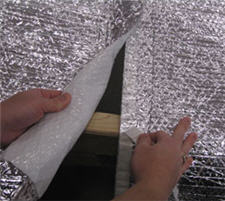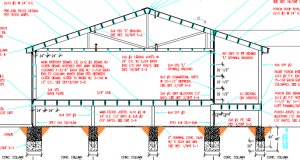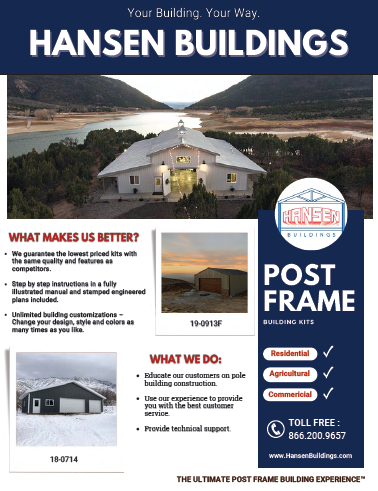Roof Leaks: Where does condensation come from?
When the weather turns cool in the fall, we get calls from customers with “roof leaks”, even when it has not been raining. These “leaks” are actually from condensation and are often reported as, “My steel roof is sweating”.
Steel roofing does not sweat. Having no sweat glands, it cannot produce moisture on its own. Condensation is a result of warm, moist air coming in contact with anything below the temperature of the dew point.
A classic example – ice cold beer on a warm day, moisture forms on the outside of the glass. The beer glass is not sweating and probably not leaking. It is just colder than the dew point causing moisture from the warm air to condense on the outside of the glass. Glass cannot absorb moisture, causing water droplets to trickle down the sides of the glass, creating a puddle or ring around the base.
Like glass, steel does not absorb moisture. Condensation, forming on the underside, falls off and drips on everything below. As steel is a heat conductor, it gets to the same temperature as the outside air very quickly.
Where does this moisture come from? Even in naturally low humidity climates, some degree of moisture is always in the air. You, as well as any animals housed in your building, produce a tremendous amount of water vapor, merely by exhaling. However, most of the moisture is coming from the ground beneath your building.
Do you believe concrete is a solid? Concrete actually acts far more like a sponge, soaking up moisture from below and allowing it to pass through into your building. Check out a concrete floor when frost is coming out of the ground and the air is warmer above.
Try this experiment either on a humid day this summer, or on a cool day this fall – lay a piece of cardboard on the concrete floor in your building overnight. The next morning lift the cardboard, the underside will be damp from moisture passing through the concrete slab!
OK, so what do you do about condensation issues in a building? If the roof has steel siding, this is actually pretty easy. We put a condensation barrier under the steel, such as reflective radiant barrier. This has white vinyl on one side and aluminum facing on the other, to reflect heat from the sun, with a layer of air cells sandwiched in between. It’s actually the air cells doing all the “no condensation” work by creating a thermal “break”. Bonus points are having deflection of heat with the silver surface, making the building cooler. And yes, this reflective radiant barrier does have a very minimal “R” value.
Back to the water issues. Putting just plastic sheeting or house wrap on your building won’t do the trick against condensation. You need a thermal break between the warm air and the steel. And down the line in another blog, I’ll discuss building ventilation to decrease condensation as well. For now, just keep in mind roof “leaks” don’t have to happen.
To receive more pole building tips and advice subscribe to the pole barn guru blog!










I thought foil bubble insulation only worked as a radiant barrier with little to no R value for conduction or convection purposes.
I have never seen any foil with R 10-14 values mostly R1.
Do you install the foil with an airspace between the metal and the foil?
For more information on reflective insulations see: https://www.buyreflectiveinsulation.com
To get the greatest R value, a dead airspace should be provided between the insulation and the steel.
I have a metal barn that has a major condensation issue, if I put the reflective insulation up will it help with my issue?
As long as you can install it, and seal it well, yes. There are probably also other issues to look at. If your building has no concrete floor, excavate several inches, put down a layer of clean sand, install a good vapor barrier and then place two more inches of clean sand over. If it does have a concrete floor, seal the concrete. Provide good ventilation – at the least, vent the ridge.
I just built a pole building with concrete floor. I have radiant bubble barrier on roof but not walls. The temp dropped and all metal, roof, walls were covered with moisture. Even under the radiant barrier. Could this problem be worst due to fresh concrete? Help please
Howard ~ Your slab is going to release a lot of moisture as it cures, if there is not a good vapor barrier under your concrete, then the moisture is coming through the floor. When everything gets dry, I’d recommend the use of a high quality floor sealant. If you do not have a vented ridge cap, you should replace the closures under the ridge with vented closures, to give a place for warm moist air inside of your building to escape.